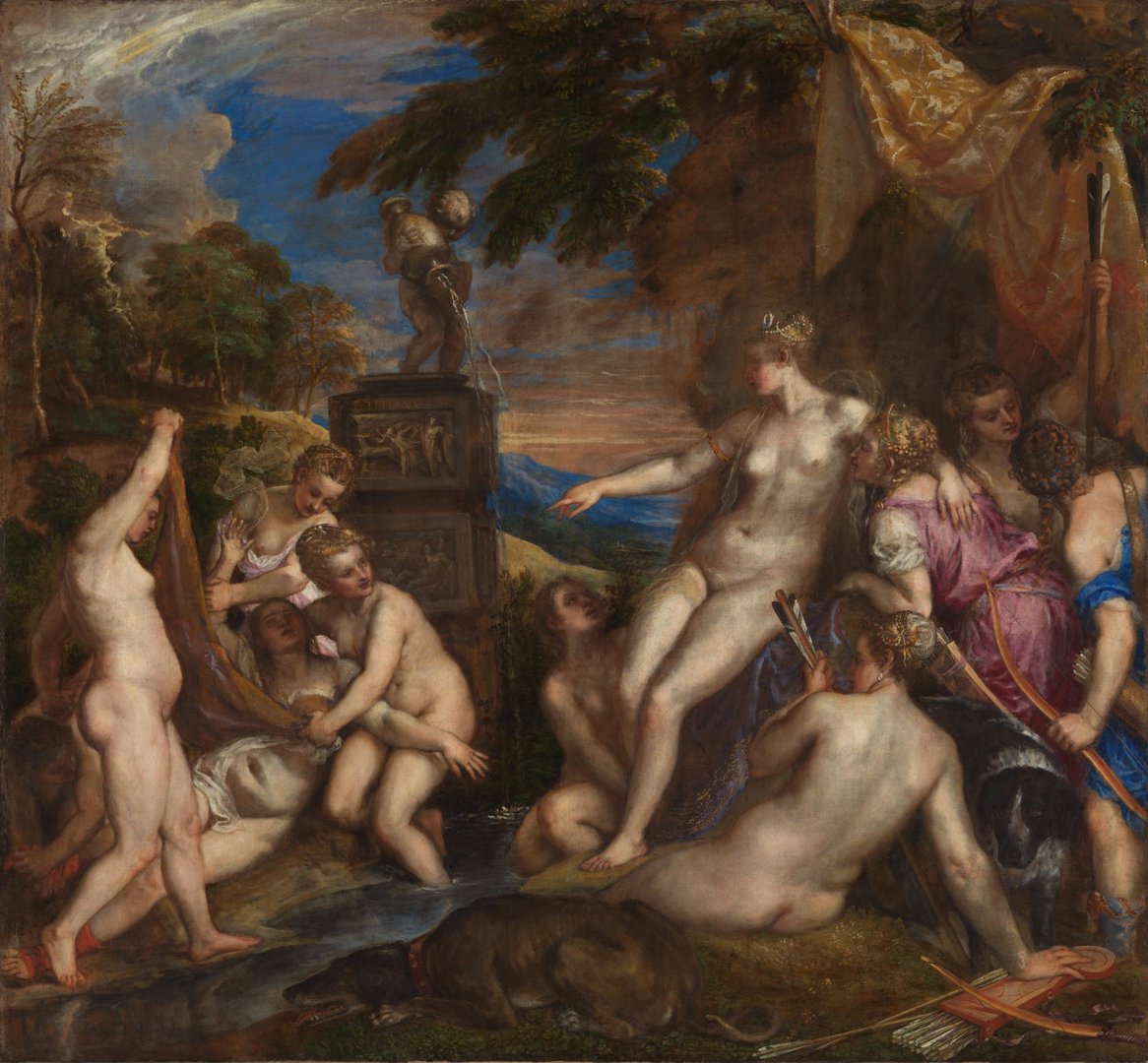Titian's 'Diana and Callisto'
Audio description
This is a description of 'Diana and Callisto' painted between 1556 and 1559 by the Venetian artist, Tiziano Vecellio – or Titian, as he is better known. A work of oil on canvas, this is a large painting, over 2 metres wide and about 1.8 metres tall. It has a thick, large gold frame which is decorated with flowing patterns and foliage.
Painted for Philip II the King of Spain, it was part of a series Titian called The Poesie, which depicts various scenes from Ovid’s Metamorphoses.
This painting, 'Diana and Callisto', depicts eleven women, most of them nude, in a verdant landscape. There is a background of rolling hills and a blue sky highlighted by reddening clouds – perhaps at sunset. The palette of greens, browns, blues, and golds is broken up by the pale skin and bright clothing of the women in the foreground, their figures slightly smaller than life-size.
They stand in two distinct groups, divided by a small stream which runs from the centre of the painting to the bottom lefthand corner. Just behind the women is a tall stone plinth, leaning slightly to the left. A stone cherubin fountainhead is perched on top. The cherubin holds an urn, from which water trickles, down into the stream.
Four of the women, in the group on the left, are restraining another, who struggles on the ground as they pull off her clothes. Two of the women hold her arms, another untying her open-toed boots, and the fourth triumphantly tugging away her overgarment, to reveal her swollen stomach. This is Callisto. She looks up in distress, her eyes and cheeks red, miniscule flecks of white on her face signifying the glistening of tears.
On the right of the stream, six of the women are huddled together under a golden, tent-like awning. Three on the right are clothed in flowing tunics of pink and blue, leaning in to get a better look at the commotion. The other three are nude, two of them reclining at the feet of Diana, the Roman goddess of the hunt, maidenhood, and the moon. She is perched on a covered seat - half sitting and half standing. Her figure is the most striking of all. With a long, elegant form, she is entirely nude, save for her jewellery, and a thin, gossamer shawl around her shoulders. Upon her head, sits a braid of pearls, topped by a crescent-shaped tiara. Her right arm is extended, pointing an accusatory finger at Callisto. Emphasising Diana’s dominion as lady of the hunt, bows and arrows lie on the ground and in the hands of her companions, while hounds sit at the women’s feet.
This is a scene derived from classical mythology or, more specifically, the Metamorphoses by Ovid. The goddess Diana and her nymphs have been out hunting. Stopping to rest and bathe, the divine huntress notices Callisto is reticent to undress. She has been the victim of sexual violence, raped by Jupiter, the king of the gods, and she is pregnant. When, this is revealed, Diana is furious at Callisto’s supposed transgression, and casts her out.
The drama and movement of this scene is made all the more apparent by Titian’s loose, expressive brushwork. Swaying trees, twisting clouds, the haphazard lean of the stone column, and the blurred outlines of the figures all contribute to a feeling of action and turmoil.
This work’s sister painting, 'Diana and Actaeon', along with a connected work, 'The Death of Actaeon', are also in the National Gallery’s collection.


